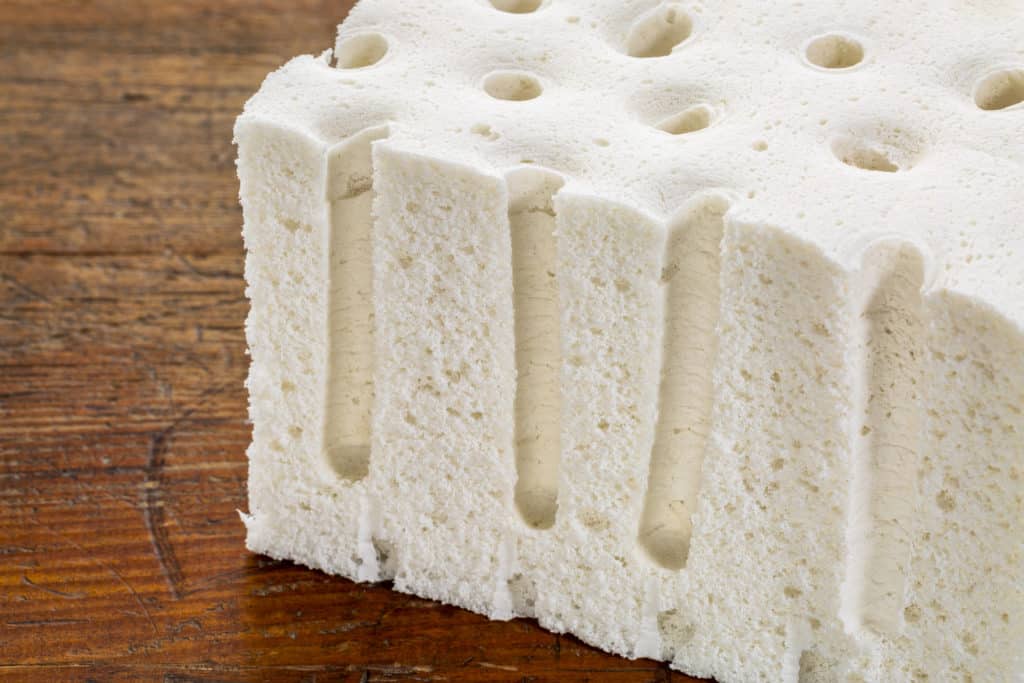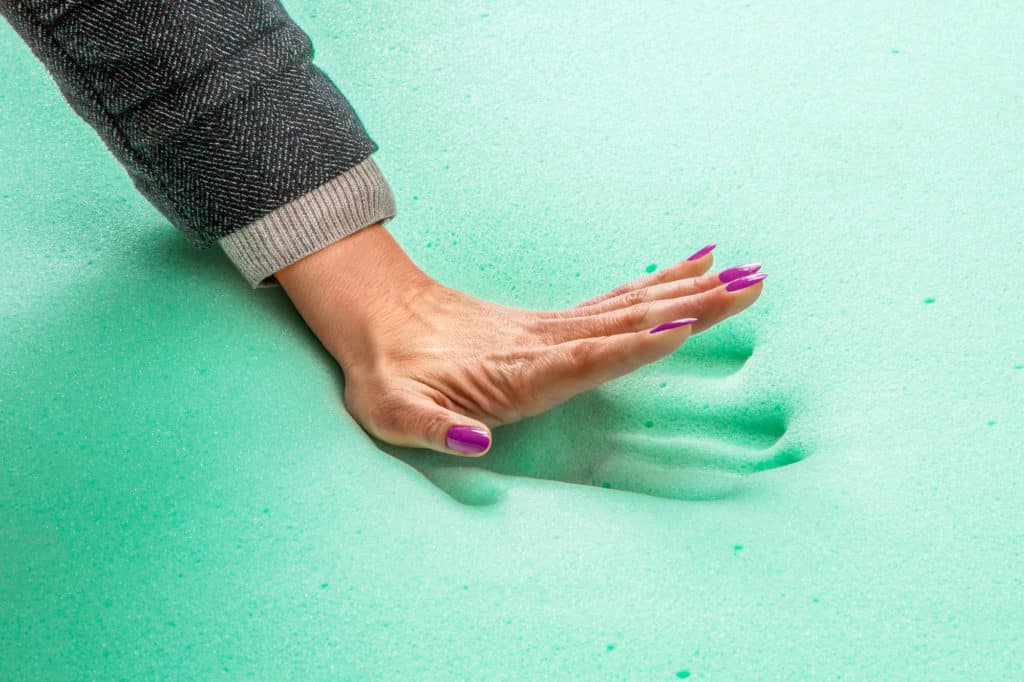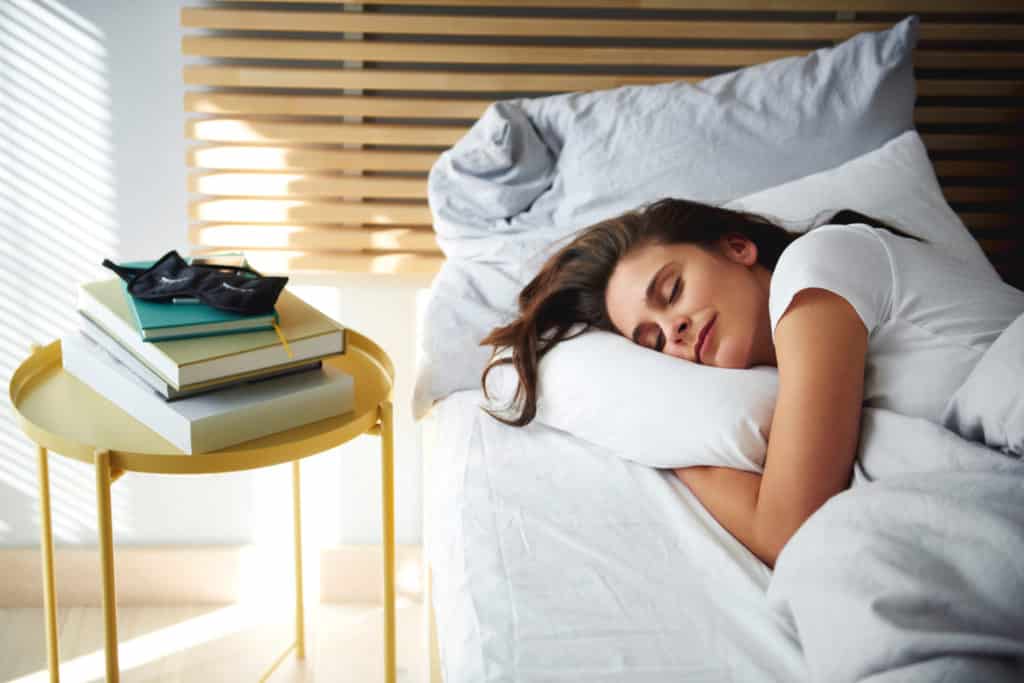Are you in the market for a new mattress? If so, you may have come across two popular options: latex and memory foam. Both offer unique benefits and features that can greatly impact your sleep quality. In this article, we will explore the differences between latex and memory foam mattresses to help you make an informed decision.
Latex mattresses are known for their durability and natural materials. Made from the sap of rubber trees, they provide excellent support and pressure relief. The construction of latex mattresses involves layers of latex foam that are either Dunlop or Talalay processed, resulting in different firmness levels. With their hypoallergenic properties and breathability, latex mattresses are great for those with allergies or who tend to sleep hot.
On the other hand, memory foam mattresses offer exceptional contouring and body-hugging comfort. These mattresses are made from viscoelastic polyurethane foam that responds to your body heat and weight, conforming closely to your curves. This can help alleviate pressure points and promote proper spinal alignment during sleep. Memory foam is also known for its motion isolation capabilities, making it an ideal choice for couples or light sleepers who don’t want to be disturbed by movement throughout the night.
As you consider whether latex or memory foam is right for you, it’s important to weigh the pros and cons of each material as well as factors such as personal preference, budget, and any specific sleep needs you may have. By understanding the materials and construction methods used in both types of mattresses along with their unique benefits, you can confidently choose a mattress that will provide optimal comfort and support for a restful night’s sleep.
Materials and Construction of Latex Mattresses

When it comes to the materials and construction of latex mattresses, you’ll find that they are meticulously crafted using high-quality natural latex and durable support layers. Latex mattresses are known for their exceptional durability, making them a long-lasting investment for your sleep comfort. The natural latex used in these mattresses is sourced from rubber trees and undergoes a careful manufacturing process to ensure its quality and reliability.
Not only are latex mattresses built to last, but they also offer outstanding comfort. The unique properties of latex allow it to conform to your body shape, providing excellent pressure relief and support throughout the night. This responsive material ensures that you get a comfortable sleep experience without feeling stuck or sinking into the mattress. Whether you prefer a firmer or softer feel, there are different levels of firmness available in latex mattresses to suit individual preferences. So, when it comes to both durability and comfort, latex mattresses truly stand out as an excellent choice for a good night’s rest.
Benefits of Latex Mattresses
One of the advantages of opting for a latex mattress is its ability to provide exceptional support and pressure relief. Latex mattresses are known for their firmness and ability to contour to your body, offering optimal spinal alignment and reducing pressure points. This means that when you lay down on a latex mattress, it will evenly distribute your weight across the surface, providing proper support to each part of your body. Additionally, latex mattresses have a natural bounce that allows for easy movement during sleep without disturbing your partner. This can be especially beneficial for individuals who tend to toss and turn throughout the night.
Another benefit of latex mattresses is their durability and eco-friendliness. Latex is a highly durable material that can withstand years of use without losing its shape or supportiveness. Unlike other types of mattresses that may sag or develop lumps over time, latex mattresses maintain their integrity for a longer period. Additionally, latex is a natural material derived from the sap of rubber trees, making it an eco-friendly choice compared to synthetic materials used in memory foam mattresses. The production process of latex mattresses also involves fewer chemicals and toxins than other types of mattresses, making them a healthier option for both you and the environment.
Overall, choosing a latex mattress provides not only exceptional support and pressure relief but also long-lasting durability and eco-friendliness. If you prioritize comfort, sustainability, and longevity in your sleep experience, then a latex mattress might be the perfect choice for you.
Types of Latex Mattresses
Immerse yourself in the luxurious comfort of different types of latex mattresses, tailored to your individual sleep needs and preferences. When comparing latex vs memory foam durability, latex mattresses have a clear advantage. Latex is known for its exceptional longevity, with some latex mattresses lasting up to 20 years or more. Unlike memory foam, which tends to lose its shape and support over time, latex maintains its resilience and bounceback ability even after years of use. This means that you can enjoy the same level of support and comfort throughout the lifespan of your mattress.
In terms of support, latex also outshines memory foam. Latex mattresses are designed to provide optimal spinal alignment by contouring to your body’s natural curves while still offering firm support where needed. This results in a balanced sleep surface that minimizes pressure points and promotes proper posture during sleep. Memory foam, on the other hand, may initially conform well to your body but can lack the necessary support for certain individuals who require more structure.
With their superior durability and supportive properties when compared to memory foam, latex mattresses offer an excellent choice for those seeking long-lasting comfort and reliable support throughout the night. So why settle for anything less when you can indulge in the unbeatable combination of luxury and functionality that only a quality latex mattress can provide?
Pros and Cons of Latex Mattresses
Get ready to experience the upsides and downsides of latex mattresses, so you can make an informed decision on whether they’re the right choice for you. When it comes to durability, latex mattresses shine. They are known for their long lifespan, often lasting up to 15 years or more with proper care. This is because latex is a naturally resilient material that can withstand compression and maintain its shape over time. So if you’re looking for a mattress that will stand the test of time, a latex mattress might be just what you need.
In addition to their durability, latex mattresses also offer exceptional comfort. The unique properties of latex allow it to contour to your body’s curves while providing support where you need it most. This means that no matter your sleeping position, whether you’re a back sleeper or a side sleeper, a latex mattress can provide the right amount of cushioning and spinal alignment. Furthermore, latex has natural breathability, allowing heat and moisture to escape instead of getting trapped in the mattress like with some foam options. So if you prioritize both comfort and temperature regulation in your sleep experience, a latex mattress could be the perfect choice for you.
Materials and Construction of Memory Foam Mattresses

When considering mattress options, it’s important to understand the materials and construction used in memory foam mattresses. One key factor to consider is the memory foam density. This refers to how much the foam weighs per cubic foot. A higher density means a firmer mattress that provides more support and pressure relief. On the other hand, lower density memory foam mattresses tend to be softer and less supportive. It’s important to find the right balance of density for your personal comfort preferences.
Another aspect to consider is the lifespan of a memory foam mattress. Generally, high-quality memory foam mattresses have a longer lifespan compared to other types of mattresses. The average lifespan ranges from 8-10 years, but this can vary depending on factors such as usage and maintenance. Over time, memory foam may start losing its ability to retain its shape and provide optimal support. However, with proper care and regular rotation, you can extend the lifespan of your memory foam mattress.
Understanding the materials and construction of memory foam mattresses is crucial when making a decision about your sleep surface. The density of the memory foam will determine how supportive and comfortable it feels, while considering its lifespan will help you gauge its long-term value for money. By taking these factors into account along with your personal preferences, you can make an informed choice that will ensure restful nights for years to come.
Benefits of Memory Foam Mattresses
Now that you understand the materials and construction of memory foam mattresses, let’s dive into the benefits they provide. When it comes to comfort and support, memory foam truly excels. The unique composition of this material allows it to conform to your body’s shape, providing a personalized level of comfort that is hard to beat. As you lay down on a memory foam mattress, it will gently cradle your curves, relieving pressure points and promoting proper spinal alignment. This results in a more restful sleep experience and can help alleviate any discomfort or pain you may be experiencing.
One of the key advantages of memory foam mattresses is their ability to offer superior pressure relief and reduce pain. Traditional spring mattresses can create pressure points where your body makes contact with the surface, causing discomfort over time. Memory foam, on the other hand, distributes your weight evenly across the entire surface area, reducing those painful pressure points. Whether you suffer from joint pain or simply want a more comfortable night’s sleep, memory foam mattresses are designed with these concerns in mind. By providing optimal support and cushioning for your body, they can help alleviate common issues such as back pain or arthritis discomfort.
Types of Memory Foam Mattresses
Let’s explore the different types of memory foam mattresses available on the market. When it comes to memory foam, one important factor to consider is the density of the foam. Memory foam density refers to how much material is in a specific area, and it can greatly affect the feel and durability of the mattress. Low-density memory foam mattresses are typically softer and more pliable, which allows for better contouring to your body. However, they may not offer as much support or longevity as higher-density options. On the other hand, high-density memory foam mattresses are firmer and tend to last longer. They provide excellent support for your body and can help relieve pressure points.
Another crucial feature of memory foam mattresses is their temperature sensitivity. Traditional memory foam tends to retain heat, which can cause discomfort for some sleepers who tend to get hot at night. However, manufacturers have developed new technologies to address this issue. For example, gel-infused memory foam incorporates cooling gel particles into the mattress material, helping dissipate heat and keeping you cooler throughout the night. Additionally, there are also open-cell memory foams that promote better airflow through the mattress and enhance breathability.
When considering different types of memory foam mattresses, it’s essential to take into account both density and temperature sensitivity. Understanding these factors will help you choose a mattress that suits your comfort preferences and ensures a good night’s sleep. Whether you opt for low-density or high-density memory foam or choose a cooling technology like gel-infused or open-cell foam, there is a wide variety of options available on the market that cater to various needs and sleeping styles
Pros and Cons of Memory Foam Mattresses
One of the advantages of memory foam mattresses is their ability to contour to your body, providing personalized support and relieving pressure points. Unlike traditional mattresses, memory foam mattresses are designed to respond to heat and pressure, allowing them to mold to the shape of your body as you sleep. This not only provides optimal comfort but also helps alleviate any discomfort caused by pressure points, such as hips or shoulders. Additionally, memory foam mattresses are known for their motion isolation properties, meaning that movements made by one person on the bed are less likely to disturb their partner’s sleep.
However, it is important to note that memory foam mattresses may have some drawbacks. One potential concern is memory foam allergies. Some individuals may experience allergic reactions when in contact with certain materials used in memory foam mattresses. These allergies can range from mild irritations like skin rashes or respiratory issues like coughing and sneezing. It is recommended for individuals with known allergies or sensitivities to consult with a healthcare professional before purchasing a memory foam mattress.
Another consideration is the temperature sensitivity of memory foam. While many people appreciate its ability to contour and provide customized support, others find that memory foam retains heat more than other mattress materials. This can potentially lead to an uncomfortable sleeping environment for those who tend to sleep hot or live in warmer climates. However, advances in technology have led some manufacturers to develop gel-infused or open-cell foams that aim to improve breathability and regulate temperature better.
Overall, while memory foam mattresses offer personalized support and pressure relief benefits, it is essential for individuals with allergies or temperature sensitivity concerns to carefully consider these factors before making a purchase decision.
Factors to Consider When Choosing Between Latex and Memory Foam
When it comes to choosing between latex and memory foam, you’ll need to consider a few important factors. First and foremost, think about your comfort level. Memory foam mattresses are known for their contouring ability, which allows them to conform to your body shape and provide excellent support. This can be particularly beneficial if you have specific pressure points or suffer from back or joint pain. On the other hand, latex mattresses have a more responsive feel and offer a bit more bounce compared to memory foam. They also tend to sleep cooler due to their natural breathability.
Durability is another crucial factor to consider when deciding between latex and memory foam mattresses. Memory foam tends to have a shorter lifespan compared to latex because it can start losing its shape over time. This means that it may not provide the same level of support after several years of use. Latex mattresses, on the other hand, are known for their exceptional durability and resilience. They typically last longer than memory foam mattresses while maintaining their original shape and supportiveness.
Ultimately, the choice between latex and memory foam will depend on your personal preferences and needs. If you prioritize contouring comfort and pressure point relief, then memory foam may be the better option for you. However, if durability is a top priority along with some bounce in your mattress, then latex might be the way to go. Consider these factors carefully before making your decision as they will greatly impact your overall sleeping experience in the long run
Making an Informed Decision for Your Sleep Needs
Consider carefully weighing all the factors to ensure you make an informed decision that meets your specific sleep needs and preferences. When comparing latex and memory foam, it is important to consider how each material affects sleep quality. Latex mattresses are known for their ability to provide superior support and pressure relief, making them a great choice for those who suffer from back or joint pain. On the other hand, memory foam mattresses conform closely to the body, creating a cradling sensation that can help alleviate pressure points and promote proper spinal alignment. By comparing the sleep quality benefits of latex and memory foam, you can determine which material will best suit your individual comfort needs.
Another factor to consider when choosing between latex and memory foam is durability and longevity. Latex mattresses are typically more durable than memory foam mattresses, with an average lifespan of 10-15 years compared to 7-10 years for memory foam. This means that latex mattresses may retain their shape and supportiveness for a longer period of time before needing replacement. Additionally, latex is naturally resistant to dust mites, mold, and mildew, making it a hypoallergenic option that can be beneficial for individuals with allergies or respiratory issues. Memory foam mattresses also offer good durability; however, they may be more prone to sagging or developing body impressions over time. Taking into account the durability and longevity comparison can help you choose a mattress that will provide long-lasting comfort and value for your investment.
When deciding between latex and memory foam mattresses it is crucial to evaluate both sleep quality comparison as well as durability and longevity comparison in order to make an informed decision that suits your specific sleep needs. By considering these factors carefully, you can select the mattress material that will provide optimal comfort, supportiveness, and longevity for a restful night’s sleep.
Conclusion
In conclusion, when it comes to choosing between latex and memory foam mattresses, there are several factors to consider. Latex mattresses offer a natural and eco-friendly option with their durable construction and ability to provide both support and pressure relief. However, they can be more expensive compared to memory foam mattresses.
On the other hand, memory foam mattresses are known for their exceptional contouring abilities and ability to relieve pressure points. They also come in various options such as traditional memory foam or gel-infused foams for added cooling properties. However, some people may find them too soft or lacking in bounce.
To make an informed decision, it is important to consider your personal preferences, budget, sleeping position, and any specific needs you may have. Testing out different mattress types in person or reading customer reviews can also help you determine which option would be best suited for your sleep needs. Ultimately, the choice between latex and memory foam will depend on individual preferences and priorities when it comes to comfort, support, durability, and environmental impact.


We have a sofa bed, and it seems no matter how you lay you can feel that metal rod in your back, straight through the mattress! I got a memory foam topper on sale at Elder Beerman’s a while back, it was kinda pricey (about $ 90) but it was soooo worth it. Your back will thank you, especially if you or someone else is sleeping on the sofa bed more than one night. I got a relatively thick one with little triangle-looking things jutting up. Its quite thick so it doesn’t fold in with the sofa, so storage is kind of a b*tch, but still worth it. Good luck!
Great comparison of the two! I’d probably take either of them over the old spring mattress I have. Of the things you compared, I think that back pain is the biggest factor for buying a mattress. No one wants to wake up sore and cranky. I’d probably have to go with the latex on that since it is more supportive than the memory foam.
I have been trying out a Nest Alexander Medium memory foam bed. Chronic back pain for 20+ years.
Owner said memory foam is better for back problems. I am still not getting any relief. He says Latex pushes back whereas memory foam absorbs and supports.
I had a premium coil mattress (McRoskey) with maximum padding before this. Was happy with it for about 5 years. Where do I go from here? Suggestions? Thanks!
Hi Harold,
Sorry to hear about your chronic back pain.
The general consensus is that memory foam is good for back pain. The owner is correct in what you’ve mentioned.
However, going forward, perhaps you should try latex if coil and memory foam has been of no luck.
You could try the DreamFoam – Ultimate Dreams Eurotop, they offer a trial period and let you choose how soft or firm you want.
Hope this helps.
thanks Lindsay. I think I am totally over memory foam and the heat. Dream foam looks really nice – I think they are made in the same factory as the current mattress I am not keeping.
memory foam responds to your bodies temperature. This is not ideal for nighttime support. We all head up where we are heaviest and when those areas, (ie: shoulder to hip) compress further your back support is gone and you will be forced to rotate more frequently impairing your 90-120 minute sleep cycle. Healthy sleepers still need to move throughout the night also. In fact a number of studies state that healthy sleepers adjust or change position approximately 20-50 times a night. The idea is it should not wake you up. With visco elastic polyurethane, (memory foam, or tempur foam) you have to wait for those indents to fill back up and that can wake you throughout the night. Latex far outperforms any memory foam in terms of pressure relief and proper support given try it in store and pick the proper firmness. Don’t let the marketing smoke and mirrors fool you.